Chapter 3
Developing a Facebook Marketing Plan
IN THIS CHAPTER
 Knowing what to include in your marketing plan
Knowing what to include in your marketing plan
 Getting to know your audience
Getting to know your audience
 Creating engaging content and measuring your results
Creating engaging content and measuring your results
 Integrating your offline and online campaigns
Integrating your offline and online campaigns
When George Harrison sang “If you don’t know where you’re going, any road’ll take you there,” he could’ve been thinking about Facebook. Because it’s true: If you don’t have a plan, you shouldn’t expect to achieve exceptional results. In fact, if we had to pick one thing that determines success or failure on Facebook, it would have to be planning.
This point became even truer in January 2018, when Mark Zuckerberg announced that Facebook’s highest goal was to generate more social interaction with friends and family and to enhance people’s well-being. The change Facebook made to its algorithm (code that determines how something is handled) results in fewer messages from business Pages in user Timelines. So, planning has become even more important now. In a later section of this chapter, we discuss ways that may help you enhance your engagement with users so that your message will be heard.
Planning is a process that forces you to define specific goals and objectives. It’s a process that forces you to ask the difficult questions, such as who your audience is and what makes customers engage with and talk about you.
This chapter helps you define Facebook goals, articulate what makes your product or service remarkable, and understand who your target audiences are. You also find out how to develop a content strategy, determine what to measure, and create a more integrated marketing strategy.
Understanding the Power of Word of Mouth on Facebook
Traditional marketing methods like print or TV ads are limited in that they can only shout (so to speak) at your customers to get them to buy something. This approach doesn’t work with Facebook because users expect dialogue; they expect that they’ll be able to contact and respond to you via your Facebook Page. They also expect that you’ll respond in a timely manner. So in contrast to the one-way communication models of TV and print, Facebook is a place where customers and businesses can engage in two-way conversations.
Over time, even marketing approaches on the Internet have undergone a dramatic evolution. Websites once represented a kind of one-way communication, one in which visitors could only view content. Websites were followed by blogs and forums, which allowed visitors to comment on content, and then networks like Myspace and Facebook came along and really gave friends the ability to connect with one another. Finally, tools like Twitter and Foursquare allowed all people (not just friends) to have real-time conversations and even share their real-world locations within those conversations (see Figure 3-1).
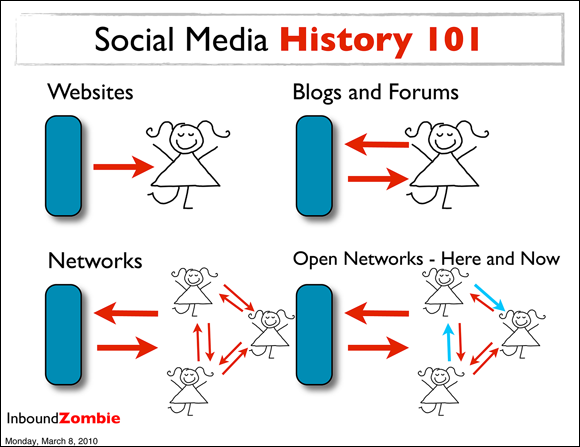
FIGURE 3-1: The advent of social networks influenced how people connect with brands.
Studies have shown that consumers trust what their friends say about a product or service ten times more than they trust what the brand itself says. This phenomenon, known as word-of-mouth marketing, has been around for centuries, but it has evolved over time. Friends originally made recommendations in person, then by mail, then by phone, then with email, and now with Facebook. But because of Facebook’s viral nature, word-of-mouth marketing can be scaled to a massive degree.
How does this play out on Facebook? Here’s an example.
When a Facebook user likes Spotify’s Page (www.facebook.com/Spotifyusa) or installs the Spotify application in her profile, these actions are automatically turned into stories that appear in the News Feeds of many of her friends. By performing a simple action such as liking Spotify’s Page, the user recommends Spotify to her Facebook friends, expanding word-of-mouth awareness of that brand without any extra effort.
Understanding What to Include in Your Marketing Plan
Before you can take full advantage of the marketing power of Facebook, you need to put together a Facebook marketing plan, which is a structured way to align your strategies with your objectives. Here are the general steps for creating your plan:
- Develop your value proposition.
- Understand your audience.
- Define your marketing goals.
- Develop your content strategy.
- Encourage audience engagement.
- Monitor and measure your Page activities.
- Integrate your online and offline campaigns.
The rest of this chapter explains each of these steps in detail. By putting these steps into practice, you can begin to put your marketing strategy in place by the end of this chapter.
Developing Your Value Proposition
Why should customers buy what you’re offering?
When you’re developing a marketing plan, the first thing you need to do is define your value proposition. How is your product or service different from the competition’s? Why should people buy your product instead of the competition’s? What value do you add that is unique to your company?
You may have a different value proposition for each audience segment you target or for each product or service you offer. Your marketing plan should detail the ways in which you plan to communicate these values to your target audience.
To understand your value proposition, answer the following questions:
- How are you different from your competitors? By knowing your competition and what separates your offering from theirs, you can begin to develop your product differential, a key ingredient that goes into your value proposition. Knowing what makes your product or service different from and better than your competitors’ helps you create messaging that gets people’s attention. What innovations make your offering stand out in people’s minds compared with the competition? Are these differences important to your customers or only to you? How can you articulate these differences in ways that make people tell their friends?
- What value do you provide your stakeholders? Stakeholders are your customers, shareholders, employees, partners, and anyone else who is affected by your company. Understanding the value you provide to them is key to developing your messaging and communications strategy. By having a clear picture of what you want to accomplish with your marketing plan, you open a world of opportunities for your business. The key is communicating your plan to your stakeholders. When your employees know and understand your brand messaging, they can pass that information on to your customers in the form of knowledge and better service. When your stakeholders know that you have a clear plan of action, they’re more comfortable with the direction in which you’re taking the company, which leads to greater support for your future ideas and plans.
- What are your big-picture goals? Some goals are more obvious than others. They could include increasing company sales or driving more traffic to your website, both of which you can do when you clearly define and communicate your value proposition. Other goals aren’t as obvious, such as improving your company’s reputation or creating a more friendly face for the brand. Whatever your company’s goals, make sure that all your Facebook marketing activities align with these goals.
Understanding Your Audience
Whatever your business goals are, always assemble the best information that you can about your audience. The better you understand the culture, desires, motivations, and viewpoints of your audience, the more effectively you can capture their attention and deliver your message. Understanding the lives of your customers and prospects is the key to creating marketing messages that resonate with people so strongly that they take action, such as joining your email list, liking your Facebook Page, or purchasing your product or service. According to Facebook, Insights (the Facebook analytics tool that shows you how your Page is performing; see more in Chapter 10) helps you learn about your three most important groups:
- People connected to your Page
- People you’ve selected to be in your target audience
- People who are on Facebook
An excellent example of a business that understands its audience really well is the Threadless T-shirt company in Chicago, Illinois. The business was founded on the simple idea of selling T-shirts based on designs submitted by artists and voted on by customers. These designs in turn get published on the company’s Facebook Page, where fans can share their favorite designs with their Facebook friends.
The folks at Threadless use Facebook (www.facebook.com/threadless) as a way to let fans know about sales; handle customer-support issues; and even engage fans in promotions on other social media sites, such as Instagram (see Figure 3-2).
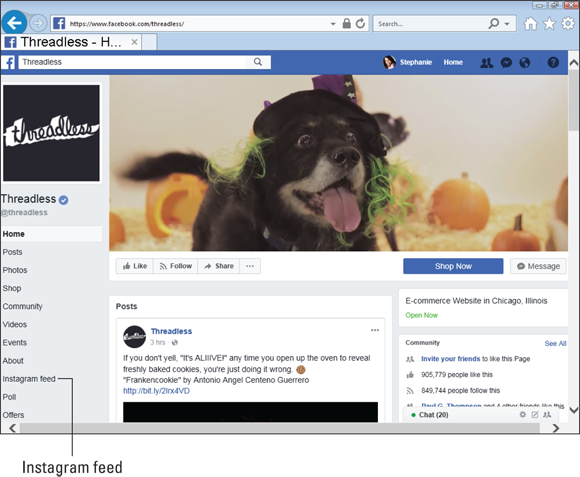
FIGURE 3-2: Threadless displays its latest Instagram feed on its Facebook Page.
Facebook gives you some powerful insights into your fans. In fact, identifying and then reaching a specific audience has never been this exact and cost-effective. The Facebook Insights tool helps you find out more about who visits your Facebook Page, including a demographics-and-interests breakdown on your fans, and Facebook’s ad-targeting capabilities make it relatively easy to get your message to the right target audience within Facebook.
Gathering this information can be fairly easy if you know where to look and how to go about doing it. Ask your customers to fill out satisfaction surveys or a short questionnaire through your e-newsletter or website, for example. Another option is to search Facebook for companies similar to yours and read the comments posted by their fans to see what makes them return to those companies.
Understanding your fans’ psychographic profiles is an important element in knowing who they are. Psychographic variables (such as what music they love, politicians they endorse, or causes they support) are any qualities relating to their personality, values, attitudes, interests, or lifestyles. Psychographic variables offer additional insight into demographics (such as age and gender) and behaviors (such as use rate or loyalty), and can help you better understand your customer segments.
Psychographics is exceptionally relevant in any discussion of social networks because your target audience is more likely to interact with you along the lines of personal interests, values, and lifestyles. Tom’s of Maine (https://www.facebook.com/TomsofMaine/), for example, takes advantage of the fact that many people are concerned about making positive changes in their communities and the health of their children. The company’s Facebook Page has a #StartFreshSmile tab that allows users to participate in a photo contest (see Figure 3-3).

FIGURE 3-3: Tom’s of Maine knows that its customers care about making positive changes in children’s health.
Defining Your Marketing Goals
When you have a better understanding of the makeup of your Facebook audience, you need to define a few goals for your Facebook marketing strategy. You may have other objectives for your business, but these four are the most common:
- Building your brand’s awareness
- Driving sales
- Forming a community of people who share your values
- Listening to feedback about your brand
Building awareness of your brand
The concept of branding traces back to the early Romans, but the practice that has always stuck with me (John) is early livestock farmers branding their cattle with branding irons so that when the animals wandered, everyone would know who owned them. Branding was a way of distinguishing a farmer’s animal from other animals that looked very similar.
These days, things aren’t that different. A brand is how you define your business in a way that differentiates you from your competition; it’s a key element in defining your marketing goals. With a Facebook Page, you can build awareness of your brand with all your current and prospective customers.
A Facebook Page (shown in Figure 3-4) serves as the home for your business on Facebook, and it should be created with your company’s brand and image in mind. It’s a place to notify people of an upcoming event; provide hours of operation and contact information; show recent news; and even display photos, videos, text, and other types of content. A Facebook Page allows for two-way interaction between you and your customers, providing them with a place to post messages. It’s also a great feedback loop that helps you find out more about your customers’ needs. See more about this in the upcoming section on Facebook Live and Messenger.
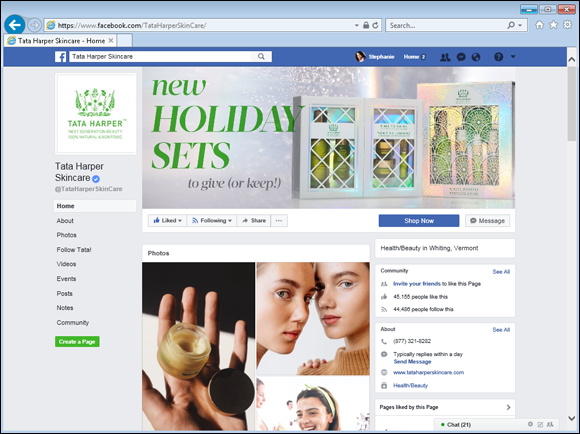
FIGURE 3-4: Facebook allows you to create a Page to market your business.
We discuss building your fan base in more detail in Chapters 7, 8, and 9, but here are three quick tips to get you started on the road to building a thriving presence on Facebook with lots of active engagement:
- Reach out to your Facebook friends. The best place to start promoting your Facebook Page is existing Facebook friends. Use the Invite feature on the right side of any Facebook Page.
- Reach out to existing customers, friends, and contacts outside Facebook through your normal marketing channels. Let these folks know that your business has a Page on Facebook. You can send them an email blast or include the address of your Page in a printed newsletter or flyer. Something as simple as “Join us on Facebook!” does the trick.
-
Engage with your current fans. There’s no doubt that the people you interact with on Facebook are more likely to do business with you than they would if they’d never heard of you — particularly when you take the time to respond to their wants and needs with useful content and timely responses.
 The Invite feature allows fans to invite their friends to like your Page, as shown in Figure 3-5.
The Invite feature allows fans to invite their friends to like your Page, as shown in Figure 3-5.

FIGURE 3-5: Use the Invite link to send a notification about your Page.
Driving sales
Whether you’re a local, a national, or an international business, Facebook can help you drive the sales of your products and services. You can leverage Facebook in several ways to achieve your sales objectives:
- Communicate special offerings and discounts, and provide an easy path to purchase with a simple link to your company website. Some larger retailers bring the entire shopping-cart experience to Facebook. Others simply link their Page to an e-commerce page on their websites. 1-800-Flowers.com offers fan-only discounts within its Facebook Page, shown in Figure 3-6, that links directly to its shopping site.
- Target your audience with a Facebook Ad campaign. In addition to creating a free Facebook Page, many marketers utilize the potential of Facebook as a cost-effective advertising medium. This is likely to increase with the potential decrease in your content reaching your customer’s Timeline. You can test and launch targeted ad campaigns that employ traditional direct marketing techniques, such as ads with engaging copy and pictures that capture a reader’s attention. The most successful offer is an incentive that appeals to your audience. (We discuss advertising in more detail in Chapter 11.)
- Create a Facebook event to generate buzz about a product. You can hold a new-product launch party or a wine tasting for potential customers, and you can throw a Facebook-only event for fans and allow them to network as well. (See Chapter 13 for a discussion of Facebook Events.)
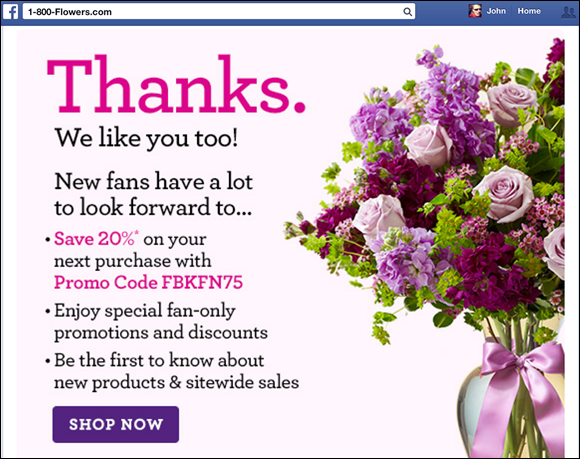
FIGURE 3-6: The Facebook Page of 1-800-Flowers.com displays special offers that link to its website.
Forming a community with a Facebook Group
One of the best uses of a social network is to build a community — a group of people who have the same interests and passion for a cause. No matter what your marketing goals are, forming a community takes some effort. We generally think that it’s arrogant for marketers to feel that they can build a community that people will flock to — the proverbial “build it and they will come” model. With a Facebook Group in addition to a Page for your business, however, that very model is possible.
A Facebook Group is about people’s shared interests or goals. With a group, you can create a community focused on an existing cause or interest that matches your business goals, and you can give your group members the tools to communicate with one another on Facebook. Another reason to create a group is to share an interest or hobby outside your business. If you own a hardware store and have a passion for building furniture, you can start a group for the purpose of uniting people who share your love of woodworking. (See Chapter 13 for a discussion of Facebook Groups.)
Listening to feedback
You can listen to feedback from Facebook members in several ways:
-
Monitor discussions in your group. As discussed in the preceding section, a Facebook Group lets you create a community and have discussions with your members, but a noteworthy byproduct of forming a Facebook Group is the ability to get feedback. The next time you think about launching a new product or service, consider having the members of your group (in addition to fans of your Page) weigh in on it before it goes to market. Don’t worry about a delay in getting the product to market; it takes only a few days to get feedback from members. Of course, you have to build up your member base before you can tap it.
 Facebook doesn’t publish secret or closed group discussions to Internet search engines, so if getting found via search is part of the strategy of your group, make sure that it’s an open group (see Chapter 13).
Facebook doesn’t publish secret or closed group discussions to Internet search engines, so if getting found via search is part of the strategy of your group, make sure that it’s an open group (see Chapter 13). -
Search for discussions about your brand. Facebook is fertile ground for open, honest, peer-to-peer discussions about your business. Just plug any search terms related to your business into the Facebook search box, and see what comes up. You might be surprised to find other fan Pages devoted to your brand.
To search for terms, type your keywords into the main search box at Facebook.com, and filter by pages, posts, or groups.
- Review postings on your Page Timeline. Facebook users can post comments, questions, and even suggestions to your Page. Make sure that you closely monitor those posts and respond appropriately and in a timely manner.
- Get feedback directly from the horse’s mouth. Use tools like Facebook Live and Messenger to engage directly with your audience and gather valuable feedback. (For more information, see the upcoming section “Encouraging Audience Engagement.”)
Developing Your Content Strategy
Keep in mind that content drives engagement. Content is the foundation of people-centered marketing. As long as social media exists, content will be a primary reason (along with relationship to the referrer) why people share your product or service with their friends. This is why it’s so important to keep asking content-related questions such as these:
- How can you tailor your content to appeal to your fans?
- How can you provide useful, educational tips and other content?
- What assets do you already have (such as videos, tips, customer testimonials, and so on) that will enhance your brand while delivering real value to your fans?
When developing your content strategy, look at your different channels of communication — your website, Facebook Page, Twitter presence, e-newsletter, Instagram, and so on — and then decide which content is right for each channel. You may realize that your Twitter followers want a different stream of updates than your Facebook fans do, and that your website visitors would be better served with more product-focused content. Because you want different types of engagement across all your channels, the content you publish needs to address each audience’s needs and concerns.
Here are some powerful ways to develop your Facebook content strategy:
-
Post to engage users. Although some content you post will be purely informative, such as broadcasting a particular price promotion to your fans, posts that are designed to encourage participation from Facebook will allow you to benefit from Facebook’s viral effect. Every time a fan comments on your Facebook Page, a story ends up in many of her friends’ News Feeds.
These stories provide links back to the original post and often generate additional attention and interaction with that content. In this way, your fans invite others along for the ride.
-
Provide discounts and special offers. As we touch on earlier in this chapter, Facebook marketers find great success through extending discounts, special offers, and giveaways to attract Facebook fans. Ads that generate the greatest responses on Facebook offer something of perceived value for very little effort on the member’s part. Often, these offers are based on a prerequisite, such as completing a form or clicking the Like button.
When developing a promotion, keep in mind that the offer must interest your target audience. Sometimes, the offer doesn’t even have to be tangible — merely the chance to have a shot at glory. In Figure 3-7, Klondike appeals to its fans’ desires by encouraging them to share funny videos. You don’t want your fans to just consume your message, you want them to interact and share their own comments.
-
Deliver content in a format that’s accessible to your audience. When developing your content strategy, you should consider the range of media at your disposal. Facebook allows you to publish content in several formats (including live streaming, photos, and videos), making this content accessible directly through Facebook with a click of the mouse. Why not take advantage of the convenience of having everything in one easy-to-access location?
Likewise, if your fans enter into a dialogue on your Facebook Page’s Timeline, continue to use Facebook as your communications channel. Don’t reach out to an individual on Twitter, LinkedIn, or some other social network unless requested to do so by the fan (otherwise, you could seem too aggressive). Maintaining a consistent approach to communicating with your Facebook fans keeps them fans for the long term.
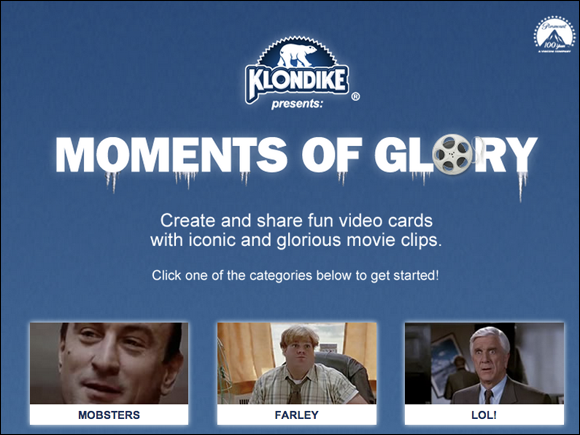
FIGURE 3-7: Klondike created a video app for Facebook fans.
Encouraging Audience Engagement
As mentioned previously, the change to Facebook’s algorithm means that you need to work even harder to engage your audience. As you work on your marketing plan, we recommend that you keep in mind the following tactics to help you achieve your goals. We also mention, where applicable, the specific chapters that go into more depth about these topics.
Creating a rich, customer-centric experience
In addition to incentives, the fierce competition to get your audience’s attention requires you to offer an outstanding customer experience. If it’s mediocre, you’ll lose out to your competition.
Here are some ways you can stand out on Facebook:
- Customer support: Responsive support is the key to developing a loyal customer. Many businesses on Facebook do a mediocre job of helping their customers find information they want and build a relationship. You can set up interactive tools that let you have private one-on-one conversations with users to satisfy their needs. Suggested tools are the following:
- Facebook Messenger: Messenger allows you to send/receive private messages directly from Facebook. In addition, you can offer mobile support to show customers that you want to communicate with them in the way they find most convenient.
- Messenger chatbots: Setting up chatbots help customers serve themselves to get the answers they are looking for. See Chapter 16 for a detailed look at Messenger and chatbots.
- Community development: Setting up a Facebook Group for your community allows you to see what your customers are talking about and how you can serve them better. A tool we suggest is Facebook Groups. Even though Facebook Groups can take some work to maintain, they help you and your members connect with others to build relationships and share information. See Chapter 13 to learn about Facebook Groups.
- Live streaming: One of the creative ways to interact with fans on Facebook is to provide live broadcasts that teach, entertain, and let your viewers get to know you better. Ask for their opinions and get them actively engaged. A good tool for this purpose is Facebook Live. You can broadcast directly from your desktop or mobile device to your user, who can watch from either venue (device or computer). Speak directly to your users and show them interviews, events, daily activities, and so on. See Chapter 16 to see how to use Facebook Live
-
Quality content: You know that if your content is subpar, you won’t get users to give you a second look. You need to create great videos, articles, and other content that will cause them to share and respond. A tool we suggest is Instagram Stories, which are easy to set up and use for spontaneous happenings. These stories can get your audience talking with you and each other. See Chapter 14 for more about Instagram and Chapter 7 for information on content marketing.
 Facebook also has a Stories section that is displayed on the upper right of your Facebook profile or Page. As of this writing, this tool hasn’t garnered as much interaction as Instagram Stories. Experiment to see whether your audience is interested in finding you on Facebook Stories.
Facebook also has a Stories section that is displayed on the upper right of your Facebook profile or Page. As of this writing, this tool hasn’t garnered as much interaction as Instagram Stories. Experiment to see whether your audience is interested in finding you on Facebook Stories. - Website integration: Any way that you can help visitors to your website communicate with you is a great step toward increasing their engagement with your brand. If they enjoy using Facebook, you are making it easier for them to talk to you. Consider using Facebook Social Plugins. Plug-ins allow you to integrate your website activity with your Facebook Page. You can also use these tools to track usage data. Chapter 15 tells you much more about how Facebook plug-ins can support your website.
Appreciating your fans and growing your base
Customers want to feel as though they’re receiving special treatment on Facebook. They want to know that their support is important to you and that their concerns are heard. They want something in return for their attention and loyalty. Facebook members love free stuff, special discounts, and promotions. But they want to be sincerely appreciated as well, and you might even argue that sincere appreciation is more valuable than free stuff. Offering both is the best approach!
It’s not surprising that Facebook members are looking for real value in the form of informative and engaging content from marketers on Facebook. Much as in Google Search, in which users are farther down the intent-to-purchase road by the very nature of their searches, Facebook users aren’t necessarily looking for specific products and services to purchase. That’s why marketers need to grab their attention through special offers.
People can find special incentive offers throughout Facebook on Facebook Pages. In Figure 3-8, StarKist gives visitors a chance to get discounts and special offers by signing up on its Facebook Page.
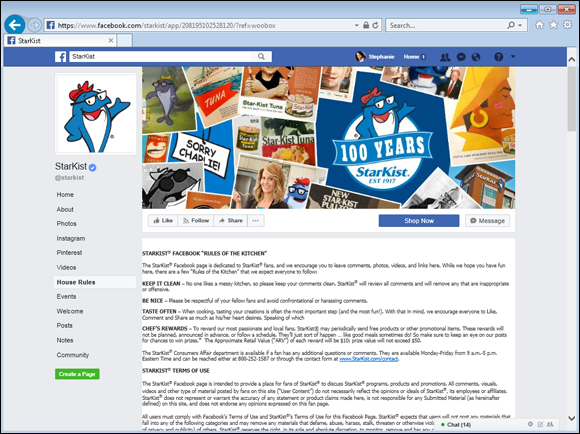
FIGURE 3-8: StarKist gives fans the opportunity to get free merchandise and special offers.
Although discounts and promotions serve as good incentives for some people, savvy marketers want to provide value in different ways that reinforce their proposition value. The Hallmark Channel’s Kitten Bowl Facebook Page (https://www.facebook.com/KittenBowl/) allows its fans to support an animal shelter with its Kitten Bowl events (see Figure 3-9). This sort of promotion creates long-term affinity among fans.
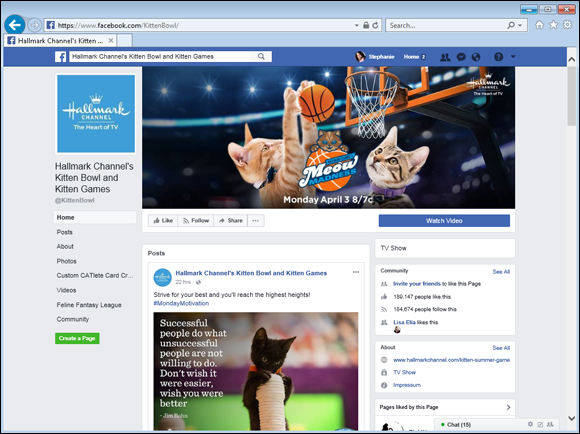
FIGURE 3-9: The Hallmark Channel has Kitten Bowl.
Monitoring and Reporting Page Activity
The last piece of the puzzle for an effective marketing plan is taking the time to monitor and measure your Page activities. Only through careful analysis can you figure out what content resonates with your audience, and because actions within Facebook are measurable, your Page’s metrics, or key performance indicators, can give you lots of insights into your fans’ interactions with your Page.
A marketing campaign is only as good as your ability to measure it. The number of people who like your Page isn’t worth anything to your business if you can’t peel away the layers to gain greater meaning into those people’s actions. You need to translate those analytics into real-world lessons that you can then apply to your content.
Facebook provides some powerful analytic tools to help you discover what’s really happening on your Page. The following sections discuss just a few things to keep in mind when taking stock of your Facebook Page’s analytics.
Using Insights for Pages
Facebook has an internal analytics system called Facebook Insights, through which you can gain greater understanding of your visitors’ behavior when interacting with your Page; it’s available for free to all Page admins. By understanding and analyzing trends in your user growth and audience makeup, and by understanding which updates get the most comments, Likes, and shares, you gain valuable insights (pun intended) into what strategies will create the most reach and engagement on Facebook.
Facebook Insights focuses on three areas of data: your fans, your reach, and the ways Facebook users interact with your content, as shown in Figure 3-10. (We explore this topic in greater detail in Chapter 10.) Insights provides information on the demographics of your audience and tracks the growth of fans on your Page and the number of Likes and comments your content has received.
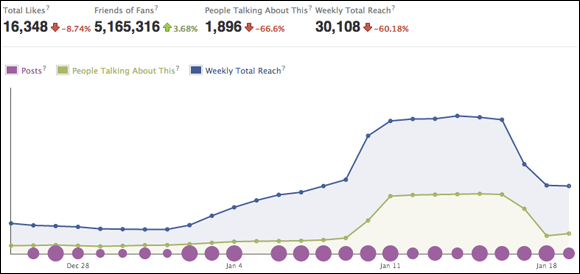
FIGURE 3-10: Facebook Insights provides metrics on how your fans interact with your Page.
By keeping tabs on some key metrics, such as the increase in the number of fans over the previous week or the number of interactions following a particular post, you can eventually uncover networks and get an idea of what works. If you notice that several fans have opted out of being fans after a particular post, you might draw a correlation between the content you posted and the drop-off rate.
Check out your Insights metrics regularly to stay on top of increases in engagement numbers and activity. Also, keep track of which posts people respond to and which ones they don’t. If you don’t see any performance changes, it may be time to rethink your content strategy.
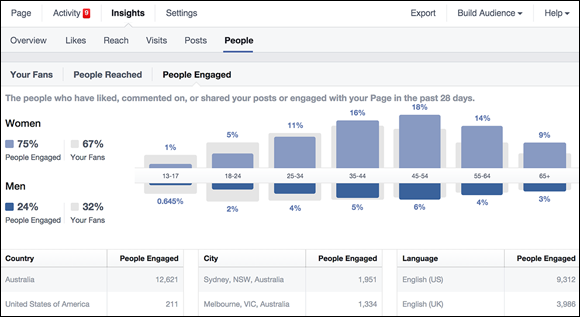
FIGURE 3-11: Facebook Insights also offers geographic and demographic data on your audience makeup.
Creating benchmarks and setting goals
As discussed earlier in this chapter, your Facebook efforts are indeed measurable. You need to have an idea of where you stand at the beginning of your efforts to compare it with where you stand at the end of a promotion, ad campaign, event, or other activity. By creating benchmarks, the key indicators that define your Page’s activity level, you can gauge your progress. Without knowing how many fans your Page had before a promotion, how can you calculate the success of the campaign? Take note of the number of views each specific tab on your Page gets; you can find this information on the Reach tab within Insights. Do certain tabs, such as your Photos tab, get more views than others? Make it a point to update the content on the other tabs to see whether this change increases their views. If views increase, you know that your fans are looking for you to update all your tabs more frequently, not just your Timeline.
In addition to setting benchmarks, set goals attached to your various Facebook marketing efforts. Japanese electronics manufacturer JVC set a goal to acquire as many fans as possible over a 60-day period through a daily contest promoted in Facebook Ads. The contest required that members like its company Page before entering the contest. The promotion proved to be so successful that JVC saw an increase in fans from fewer than 1,000 at the outset of the contest to more than 34,000 in 30 days.
Although anticipating the success of a campaign or particular post before going live with it is difficult, by forecasting the outcome, you have to consider the results at the outset of your planning. Therefore, you can better manage your coworkers — and, more important, your boss’s — expectations.
Keeping an eye on key metrics
The Facebook Page performance metrics that are important to you are in part determined by what your goals are. If your goal is to drive clicks to an external website, tracking referrals from your Facebook Page is an important indicator for you. Likewise, if your goal is to drive engagement, the number of comments associated with your content is most likely the metric you need to measure. Most of all, you need to take this data and translate it into real-world insights to make it valuable.
Here are seven key metrics to consider when tracking the performance of your Facebook presence:
- Views: A fundamental measurement is the number of views or visitors your content receives, and your Facebook Insights page is the place to go for this information. Understanding where people spend their time on your Facebook Page gives you a good idea of what information they find valuable.
-
Comments (found under Reach): The number of comments you receive for a particular post is a great way to track performance. This information also helps you identify which posts resonate with your fans. Typically, the more comments a post receives, the more interested your fans are in that content. Insights provides your Page’s comment activity in an easy-to-read graph.
 When measuring the number of comments, don’t forget to consider the sentiment of those comments. If all the comments are negative, you could have a backlash if you produce similar posts.
When measuring the number of comments, don’t forget to consider the sentiment of those comments. If all the comments are negative, you could have a backlash if you produce similar posts. - Clicks and downloads: If you post downloadable content or a link to content on an external website, it should always be trackable. You can use Insights to track them. Several URL shorteners, such as Bitly (
http://bit.ly) and Tiny.cc (http://tiny.cc), also provide third-party click-through metrics on any link you shorten through their services. This is an excellent way to track the interest in a particular link or download. - Shares (under Reach): If your content strikes a chord with your fans, chances are that they’ll share the content they find valuable with their own network. By monitoring (with Insights) the number of times content you post is shared, you can get a good sense of what’s of interest to people.
- Inbound links: Although linking is more common on external websites, Facebook Pages are linked to by bloggers, media outlets, search engines, and people who are generally interested in your Page. Searching Google by using your Page URL as a search term tells you how many sites link to your Facebook Page. Typically, the more links to your Page, the better.
- Brand mentions: If you’re doing a good job marketing your business on Facebook, chances are that it’ll have a spillover effect across other social media outlets. Several free social media search sites, such as Social Mention (
http://socialmention.com), track brand mentions. Make a point of running a search of your company name on these sites on a regular basis. Monitoring what people say outside Facebook provides numerous insights into your marketing effectiveness. - Conversions: A conversion occurs when a visitor undertakes a desired action, such as completing a transaction on your website, filling out a registration form, subscribing to your e-newsletter, or signing up for an event. Conversions are among the strongest metrics you can measure and track. If you look at it as a ratio of total visitors to those who have converted on a particular action, you see that the higher the percentage of people who undertake that action, the better.
Integrating Your Online and Offline Campaigns
When you start to solidify your Facebook marketing strategy, you may question what support systems and resources you need or wonder how to integrate your social network marketing strategy with your existing marketing plans. In this section, we make some suggestions on how to support the effort without overloading yourself or your marketing team.
There’s no reason why you can’t leverage your existing offline campaigns with a social network but be sure that you incorporate the campaigns into Facebook the right way. That is, include all elements of your campaign on Facebook. If you’re throwing an Event or starting a campaign, for example, mention it to your Facebook fans. Pretty much anything you currently do can be digitized and used on your Facebook Page.
Here are some ways that you can integrate your offline campaigns with your Facebook marketing activities:
- Promote face-to-face Events. You want people to attend your Event, right? Mention your Event on your Page, and even link to any outside information you’ve posted, such as on your website. Better yet, create a Facebook Event and get a head start on your head count with those RSVPs that are going to come rolling in via your Page. (See Chapter 13 for more information on setting up Events within your Facebook Page.)
-
Adapt advertising campaigns to use for Facebook Ads. Just be sure to make the campaign more social and conversational in tone by creating short, attention-grabbing headlines and using eye-catching pictures.
 You have a limited number of characters to use in a Facebook Ad, so make every character count.
You have a limited number of characters to use in a Facebook Ad, so make every character count. - Compare Facebook results with offline efforts. Have you found that you have a better response rate to your Facebook marketing activities than, say, to sending out a direct mailer? Did you find that you got more visits to your website because of something you posted on your Page than phone calls from prospective customers as a result of your mailers? Take some time to view both your online and offline marketing results to get a clear picture of what’s working and what isn’t. After you compile this information, you can focus more closely on what gets you the most results.
The following sections explain how to evaluate your media budget and take inventory of your content assets.
Deciding on a media budget
Believe it or not, the cost of the technology used for social network marketing is rather low. A blog costs almost nothing to start, a podcast can cost up to $2,000, a wiki can cost up to $6,500 per year, and a video can cost up to $15,000. Your Facebook Page is free, but a private, branded app on Facebook can cost up to $100,000.
Unlike traditional media (print, TV, and radio) that can cost big money, social networks’ upfront costs are very small. A blog or Facebook Page costs nothing to start, but the real (and potentially large) cost is creating a steady stream of rich content to fill these new media channels.
You can also use an online marketing budget calculator like the one at Hubspot https://www.hubspot.com/ads-calculator?ads-budget=100&cpc=0.8&conversion-rate=3.00&average-price=400<c=10 to help you determine the ROI on ad spending.
Hiring an online writer
To create a steady stream of rich content that attracts the right audience, plan to have access to some additional, perhaps dedicated, writing resources for all your social content needs.
Social writing is a unique skill because the writing needs to be conversational. Headlines need to be provocative and entice the reader to want to know more. Above all, body copy needs to have a colloquial tone without a trace of sales- or marketing-speak.